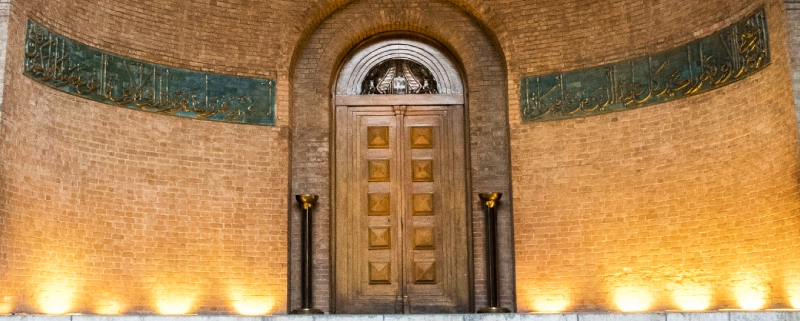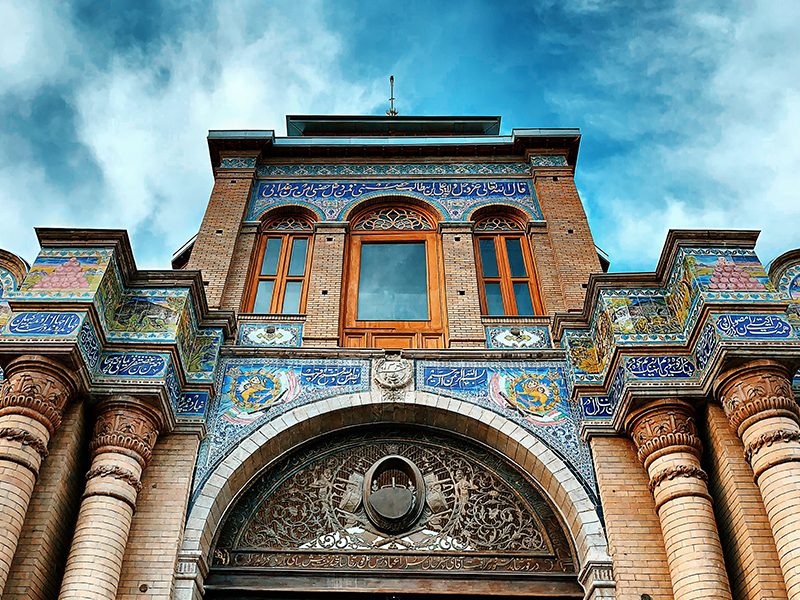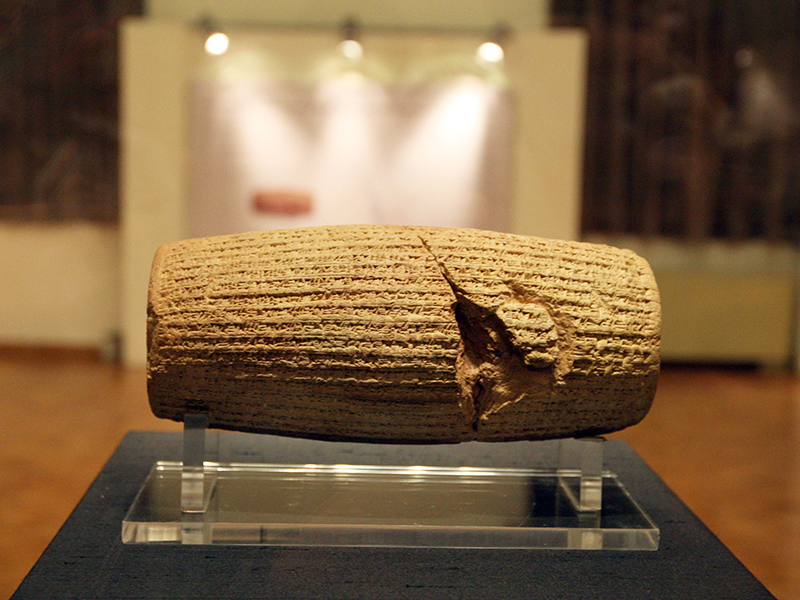National Museum of Iran (Photos, Architecture, Ticket price)
The Iran Bastan Museum, with the official name of the National Museum of Iran, stands as a majestic bastion of the country’s rich history and cultural heritage, offering visitors an awe-inspiring journey through millennia of human civilization. This magnificent institution holds an extensive collection of artifacts that chronicle the nation’s vibrant past, from prehistoric times to the Islamic era. With its compelling exhibits, the museum beckons both locals and international visitors to immerse themselves in the splendor of ancient Persia and explore the cultural tapestry that shaped modern-day Iran.
Historical Overview Iran National Museum
The museum was established in 1937 and has since become a beacon of the nation’s past, offering a captivating glimpse into the diverse and influential civilizations that once flourished on the Iranian plateau. The idea of establishing a national museum in Iran first emerged during the reign of Reza Shah Pahlavi, the country’s ruler at the time. Inspired by the growing interest in archaeology and cultural heritage preservation in Europe, Reza Shah envisioned creating an institution that would house Iran’s most precious historical artifacts and celebrate the nation’s cultural legacy.
Upon its opening in 1937, The National Museum of Iran initially focused on archaeological artifacts from excavations carried out across the country. Over time, the museum expanded its collection through donations, acquisitions, and further archaeological discoveries. One of the significant developments in the museum’s history occurred in the 1970s, during the reign of Mohammad Reza Shah Pahlavi. A new building, known as the Museum of Ancient Iran, was constructed adjacent to the original structure. This new wing allowed for the display of a more extensive collection of ancient artifacts, ranging from prehistoric times to the Islamic era.
National Museum of Iran Architect
André Godard, a prominent French architect, and archaeologist, designed the National Museum of Iran. Born in 1881, Godard is renowned for his significant contributions to the field of archaeology and architectural heritage in Iran during the early 20th century.
André Godard arrived in Iran in 1928 as a member of the French archaeological mission to the country. His expertise in both architecture and archaeology made him an invaluable asset to the mission, which aimed to excavate and study Iran’s ancient historical sites and artifacts. As a key member of the French mission, Godard was involved in various excavations and research projects across Iran, including Persepolis, Susa, and Pasargadae. His deep appreciation for Iranian art, architecture, and culture inspired him to envision a museum that would preserve and display the nation’s historical treasures in an architectural masterpiece.
Architecture of the National Museum of Iran
The National Museum of Iran’s architecture is a splendid fusion of traditional Persian elements and modern influences. The façade showcases a harmonious blend of Achaemenid, Sassanian, and Islamic styles, featuring intricate geometric patterns and ornamental details. The grand entrance adorned with arched portals welcomes visitors into a treasure trove of historical artifacts. On the interior, the central hall boasts a magnificent dome adorned with Islamic calligraphy and geometric patterns, creating a captivating ambiance. The museum’s interior layout guides visitors through a chronological journey of Iran’s history, with exhibits organized from prehistoric to Islamic eras. Modern display techniques are integrated seamlessly, allowing visitors to engage with the artifacts while preserving their integrity.
André Godard’s visionary design for the National Museum of Iran marries traditional Persian aesthetics with modern sensibilities. The exterior features imposing stone walls with intricate motifs inspired by historical monuments. The central hall’s dome, reminiscent of Persian mosques, exudes elegance and spiritual significance. Inside, the exhibition halls house an impressive collection of artifacts, taking visitors on a captivating journey through Iran’s cultural and historical legacy. The museum’s architectural brilliance creates an immersive and educational experience for visitors, fostering a deeper understanding and appreciation of Iran’s ancient civilizations.
Top Artifacts and Exhibits
Stepping into the National Museum of Iran is akin to entering a time machine that transports visitors through the annals of history. Among the museum’s top artifacts is the renowned Cyrus Cylinder, an ancient clay cylinder inscribed with a cuneiform script attributed to Cyrus the Great, founder of the Achaemenid Empire. The Cylinder symbolizes the spirit of human rights and religious tolerance, making it a powerful emblem of ancient Persia’s progressive values.
Another captivating exhibit is the Elamite statue of Queen Napir-Asu, a masterpiece of art from the ancient Elamite civilization. The statue showcases the exquisite craftsmanship and artistic finesse of its time. Other highlights include exquisite pottery, jewelry, coins, and historical manuscripts that offer glimpses into the daily lives, traditions, and artistic prowess of various eras.
Tracing Ancient Iranian Civilizations
The National Museum of Iran takes great pride in representing the diverse and influential ancient civilizations that once thrived on the Iranian plateau. From the majestic splendor of the Achaemenid dynasty to the artistic ingenuity of the Parthians and Sassanians, each exhibit is a testament to the grandeur of these empires and their contributions to human history.
The Prehistoric Iran gallery provides insight into the Paleolithic, Neolithic, and Chalcolithic periods, showcasing ancient tools, pottery, and remnants of early settlements. The hall dedicated to the Achaemenid era exhibits the opulence and administrative prowess of the world’s first superpower, with artifacts ranging from golden jewelry to administrative tablets.
The Islamic Era
The Islamic era is a central focus of the museum, illustrating the emergence of a new cultural identity in Iran following the Arab conquests. Visitors can marvel at a dazzling array of Islamic art and architecture, including intricately designed tiles, mesmerizing calligraphy, and impressive manuscripts that reflect the fusion of Persian and Islamic influences. Exhibits on the Safavid and Qajar periods showcase the zenith of Iranian art and craftsmanship, with elaborate textiles, delicate Persian miniatures, and dazzling ceramics that epitomize the opulence of these golden ages.
Cultural Treasures
Beyond its historical artifacts, the National Museum of Iran houses an extensive collection of cultural treasures, which provide a glimpse into the customs and traditions that have endured throughout Iran’s history. Traditional clothing, musical instruments, and decorative items embody the essence of Iran’s diverse cultural heritage and the enduring spirit of its people.
National Museum of Iran – Tehran Attractions
The National Museum of Iran is one of Tehran’s most prominent and captivating attractions, offering visitors a fascinating journey through the country’s rich history and cultural heritage. As the largest museum in Iran, it is a must-visit destination for travelers interested in exploring the ancient civilizations that once thrived on the Iranian plateau. The National Museum of Iran stands not only as a guardian of the nation’s historical treasures but also as a testament to the enduring spirit of creativity and cultural heritage that continues to inspire and fascinate history and culture lovers from all over the world.
Preserving the Legacy
Preserving and conserving the nation’s cultural heritage is a paramount responsibility of the National Museum of Iran. The museum employs state-of-the-art techniques and modern conservation practices to ensure the artifacts’ longevity, safeguarding them for future generations to admire and study.
The National Museum actively collaborates with international institutions and researchers to promote cultural exchange and share its treasures with the world. Such partnerships facilitate educational opportunities and foster a deeper understanding of Iran’s history and culture on a global scale.
Visitor Experience
A visit to the National Museum of Iran is an unforgettable experience, offering a profound connection to the past and a glimpse into the soul of this fascinating nation. Visitors embark on a captivating journey through time, captivated by the museum’s meticulously curated exhibits and the stories they reveal.
The museum also offers educational programs, lectures, and workshops that engage visitors of all ages, inspiring a love for history and art. Guided tours by expert curators provide unique insights and contextual information, enhancing the overall visitor experience.
What is the Largest Museum in Iran?
The National Museum of Iran in Tehran is considered the largest museum in the country. This prominent cultural institution houses an extensive collection of artifacts spanning thousands of years of Iranian history, from prehistoric times to the Islamic era. It serves as a repository of the nation’s rich cultural heritage and plays a vital role in preserving and showcasing Iran’s historical legacy to both local and international visitors.
How Much is the National Museum of Iran Ticket Price?
The ticket price for tourists at the National Museum of Iran for foreign visitors is 4,000,000 Rials (approximately 7 USD). Large groups, such as school groups or tour groups, may receive discounted rates for entry.
More Information to Visit the National Museum of Iran
National Museum of Iran opening hours: Spring and summer, every day from 9 a.m. to 7 p.m.
Autumn and winter, every day from 8:30 a.m. to 5 p.m.
National Museum of Iran contact number: +982166702061
National Museum of Iran website: www.irannationalmuseum.ir/en/
National Museum of Iran Address: No.1, Henri Rolin St., Siy-e Tir St., Emam Khomeini Ave, Tehran (Location on map)
Final Word
The National Museum of Iran stands as a testament to the country’s extraordinary past and the enduring spirit of its people. Through its priceless artifacts and exhibits, the museum weaves a narrative that intertwines the threads of history, culture, and identity, fostering a deep sense of appreciation and wonder. As the custodian of Iran’s cultural treasures, the National Museum continues to inspire, educate, and bridge the gap between ancient Persia and the modern world, leaving an indelible mark on all who pass through its doors.
Are you planning to travel to Iran and looking for an Iran travel agency? Please read Things to do in Tehran and Check out our Iran tours.










“The ticket price for tourists at the National Museum of Iran for foreign visitors is 1,000,000 Rials (approximately 2 USD), which is very reasonable and low considering the many magnificent works that this museum provides to visitors.”
Bear in mind that these prices have raised 300% in the last months. Now it costs nothing less than 4,000,000 Rials. Just ridiculous!
Hi there
Thank you for sharing your information with us. We edited the blog post with new price.
Regards.